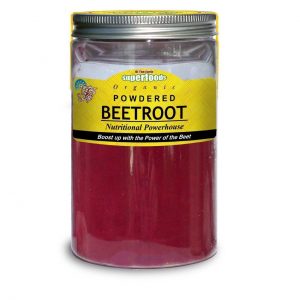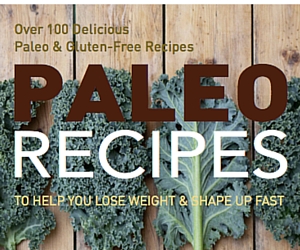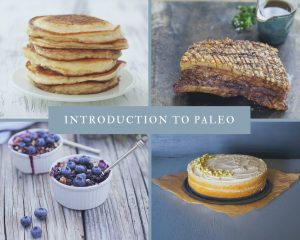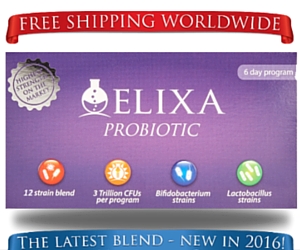I have written before about Probiotics and Fermented Foods to increase the levels of beneficial bacteria in your gut. Another important step towards good gut health is ensuring that you feed the beneficial bacteria with prebiotics. Prebiotics are special fibres found in complex plants and roots that feed beneficial strains of bacteria, helping them to grow and crowd out pathogenic bacteria.
Prebiotics in Food – Inulin-Oligosaccharides & Beta-Glucan
A special group of fibres called inulin and oligosaccharides tighten the gut and prevent leakage and inflammation. Foods that contain these fibres include:
- Raw onion (4g/100g)
- Raw garlic (3g/25g)
- Raw leek (6.5g/100g)
- Chicory root (41g/100g)
- Jerusalem artichoke (18g/100g)
- Dandelion greens (13g/100g)
- Yacon Syrup & Dried Yacon Flakes – these contain fructo-oligosaccharides (FOS) which is similar to inulin
- Soaked raw oats contain beta-glucan that is another prebiotic. Look for gluten-free, steel-cut oats and soak for 24-48 hours before eating.
I find raw leeks easier to eat than raw onions, they are milder and they are also higher in inulin. I chop raw leeks finely, add a crushed garlic clove and marinate in some raw apple cider vinegar, extra virgin olive oil, salt and pepper. I then have this mix with eggs, on top of baked potatoes or mixed into salads.
Prebiotics in Food – Resistant Starch Types 2 and 3
Some foods contain a type of indigestible starch called resistant starch (since it is resistant to digestion). This starch is indigestible to us, but our gut bacteria love it. There are four types of resistant starch, but the important ones are types 2 and 3.
Type 2: This is found in certain foods when they are raw. The best sources include:
- Raw green (unripe) plantains. You can add green plantains to smoothies, or thinly slice and dehydrate to make chips. You can also use green plantain flour in smoothies but I haven’t found a source in the UK
- Raw green (unripe) bananas – use in the same way as raw green plantains
- Raw potatoes (not recommended) & raw potato starch
- Raw tigernuts and raw tigernut flour
Type 3: When certain foods are cooked and then cooled, a special type of resistant starch is formed. It has a dense, DNA-like configuration and our gut flora thrives on it. The best sources are:
- Roasted and cooled heirloom potatoes such as purple potatoes (15-19g/100g)
- Cooked and cooled beans such as pinto beans (10g/100g)
- Cooked and cooled yams (6-8g/100g)
- Boiled and cooled white potatoes (3-7g/100g)
- Cooked and cooled sushi rice (3-4g/100g)
- Cooked and cooled lentils, chickpeas, hummus (2-4g/100g)
- Cooked and cooled rice (1-3g/100g)
Prebiotic Supplements
There are several supplements that can be added to the diet to provide fibre for the gut bacteria:
- Bimuno – a second generation prebiotic – a source of a special prebiotic called B-GOS
- Inulin-Fructo-Oligosaccharides (Inulin-FOS)
- Psyllium
- Acacia Gum/Fibre – I buy Heather’s Tummy Fibre made from Acacia Senegal
- Pectin
- Chorella
- Arabinogalactan
- Glucomannan/konjac root
- Oat Bran/Beta-Glucan
- Galacto-Oligosaccharide (GOS)
- FOS-rich Yacon Syrup/Yacon Root Powder/Yacon Flakes – a source of FOS – I buy mine from Of The Earth Superfoods
- Ground flaxseed
- Baobab Hadza Fruit Fibre
- Green Banana Flour – a source of resistant starch in the RS2 form
- Green Plantain Flour – a source of resistant starch in the RS2 form
- Raw Unmodified Potato Starch (RUMPS) – a source of resistant starch in the RS2 form
- Chitosan
- Hemp seed powder
- Wheat grass
- Guar gum
- Amla Powder
- Grass-fed gelatin and collagen
- Ground chicory root – a source of inulin
- Beetroot powder

For a while there was a big focus on Type-2 Resistant Starch (RS2) with a lot of people taking Bob’s Red Mill Raw Potato Starch. However, like with most things, it turns out to not be a good idea to focus only on one fibre source as RS2 feeds certain gut bacteria but not others. We want to aim for diversity and variety in gut bacteria. According to Dr Grace Liu of www.thegutinstitute.com RS3 is probably more beneficial than RS2, and we should be feeding our gut with the whole spectrum of ancestral fibres.
The best strategy is to include a whole range of the above wholefoods in your diet. In terms of supplements you could try making a daily smoothie and adding Dr Grace’s BIONIC FIBRE or using Richard Nikoley’s (Free The Animal) smoothie recipe. Or simply rotate taking a few of the different fibre supplements for variety and diversity.
PODCAST
- Listen in to Eat Better – Episode 4 where Tommy and I talk to Chris Kelley of Nourish Balance Thrive about gut health.
Further Reading






You must be logged in to post a comment.